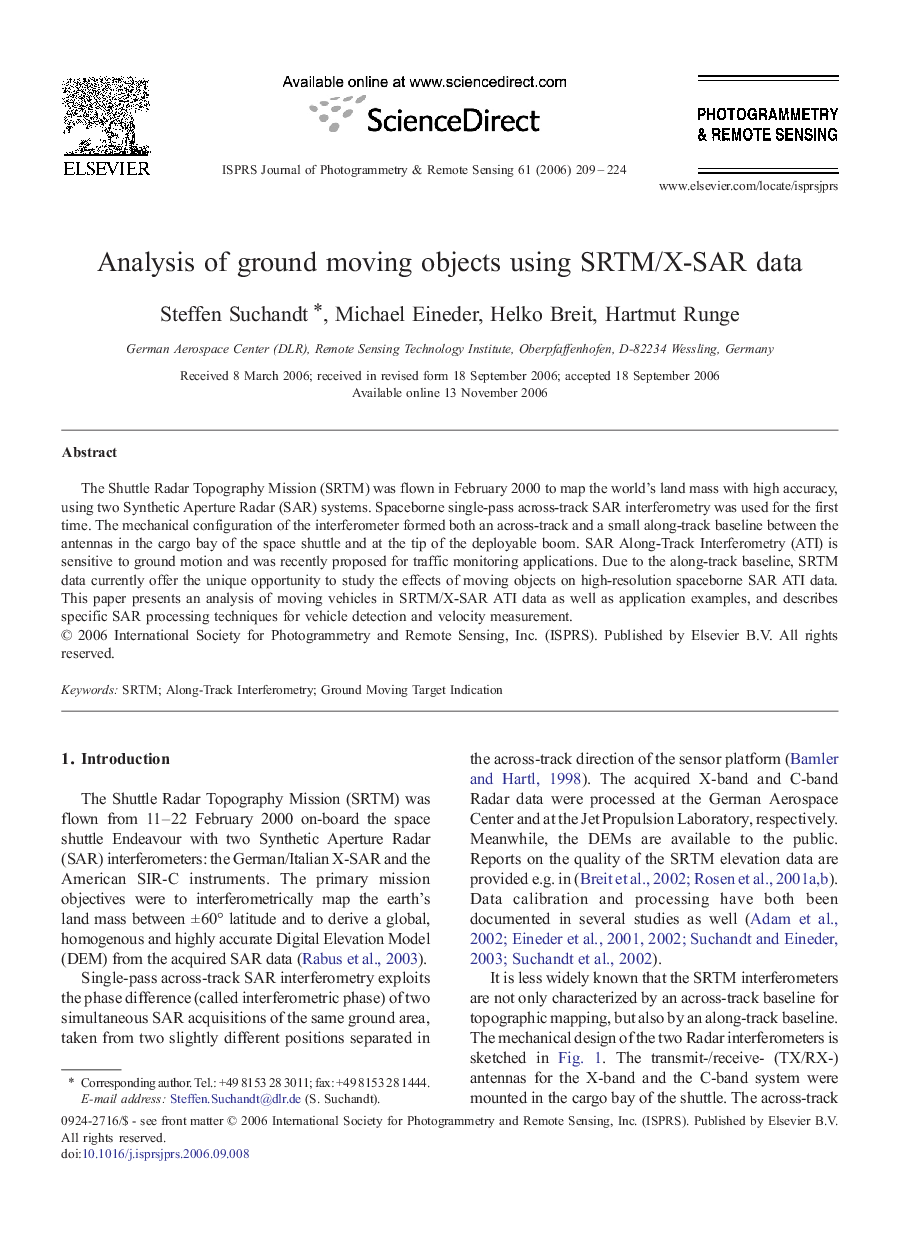| Article ID | Journal | Published Year | Pages | File Type |
|---|---|---|---|---|
| 556171 | ISPRS Journal of Photogrammetry and Remote Sensing | 2006 | 16 Pages |
The Shuttle Radar Topography Mission (SRTM) was flown in February 2000 to map the world's land mass with high accuracy, using two Synthetic Aperture Radar (SAR) systems. Spaceborne single-pass across-track SAR interferometry was used for the first time. The mechanical configuration of the interferometer formed both an across-track and a small along-track baseline between the antennas in the cargo bay of the space shuttle and at the tip of the deployable boom. SAR Along-Track Interferometry (ATI) is sensitive to ground motion and was recently proposed for traffic monitoring applications. Due to the along-track baseline, SRTM data currently offer the unique opportunity to study the effects of moving objects on high-resolution spaceborne SAR ATI data. This paper presents an analysis of moving vehicles in SRTM/X-SAR ATI data as well as application examples, and describes specific SAR processing techniques for vehicle detection and velocity measurement.
